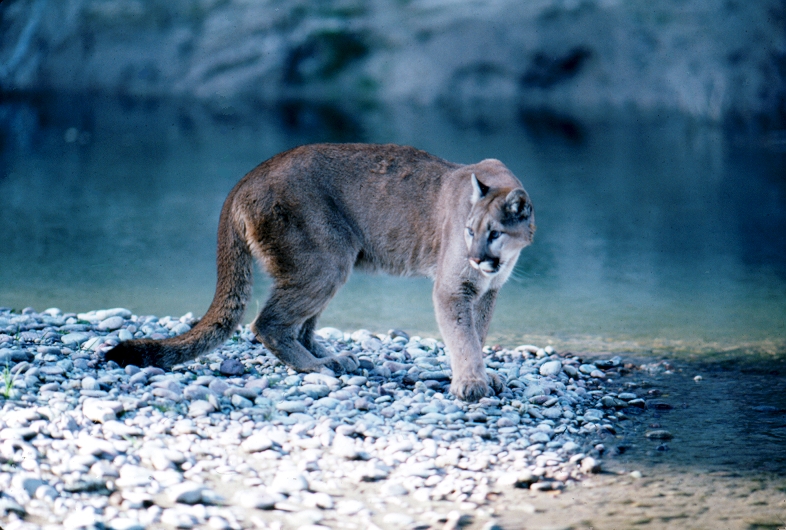
This is NOT a photo of the cat reportedly seen in Ketchikan. This is a mountain lion in the Grand Teton National Park in Wyoming. (National Park Service public domain image)
Are there mountain lions in Ketchikan? A few recent social media posts have resurrected discussion that started after a possible sighting last summer.
In late August of 2018, Ketchikan resident Peter Rice was hiking with two relatives along Coast Guard Beach Trail on the north end of Revilla Island. He says his cousins had never visited Alaska before and he was explaining the features of a muskeg to them when the trio spotted an animal in a treeless, boggy section.
“And we all observed this large, tawny brown animal loping across the muskeg from left to right that had a gait that was very distinct in terms of looking like a loping, cat-type animal.”
Rice says the three felt certain it was not a deer or dog. He says they all are avid wildlife watchers and believed it must have been a mountain lion.
“It had the right coloration. It was muscular, it was probably about 150 pounds, I would think, or 120. It was about 75 yards away and had a long, bushy tail with a darker section on the end of the tail.”
Rice says the encounter was brief. The animal loped away without looking at them. He did not get a photo and says, in retrospect, he wished they had examined the area to see if there were prints.
Ross Dorendorf is a wildlife biologist with the Alaska Department of Fish and Game. He says he received a call about that encounter, but didn’t feel there was enough detail to verify what the animal was. Dorendorf says there have been instances where other animals have been mistaken for mountain lions, also called cougars. He spoke about reports of multiple sightings in a Petersburg neighborhood.
“They swore they saw a cougar but it ended up being a dog. That gives you a sense of how difficult it can be if you only see something for a moment and you don’t have anything to compare the size or not enough time to get a really good ID. It makes it difficult.”
Dorendorf says his predecessor at ADF&G in Ketchikan, Boyd Porter, confirmed a cougar sighting in Margaret Creek. Dorendorf says, to his knowledge however, there wasn’t hard evidence such as scat, hair or a clear photograph of the animal or its tracks. He says there were two incidents in Southeast where there were no doubts, in 1989 when a mountain lion was shot near Wrangell, and in 1998 when one was snared on south Kupreanof Island. Dorendorf says the animals likely accessed the areas through the Stikine River drainage.
“Here in Ketchikan, we do have the Unuk River, but it’s a much smaller drainage, that connects British Columbia, which has a fairly robust population of mountain lions, to Southeast Alaska. So I would expect less to come from there and more to come from the Stikine.”
Dorendorf says it’s unlikely there is a breeding population of mountain lions in the area. Though sounding somewhat skeptical, he says single animals might be coming into the area from Cleveland Peninsula.
If someone spots what they believe is a mountain lion, Dorendorf says the more detail, the better. If possible, he says get a photograph of the animal or its prints, scat or hair. He says DNA analysis of hair can be done to verify whether the animal is, in fact, a cougar.
This story has been edited to correct how cougars most likely could access the Ketchikan area.
________________________________________________________________
Here is a link to a story about a possible cougar sighting in Ketchikan in 2017: https://www.krbd.org/2017/10/11/large-cat-sightings-reported-ketchikan/





